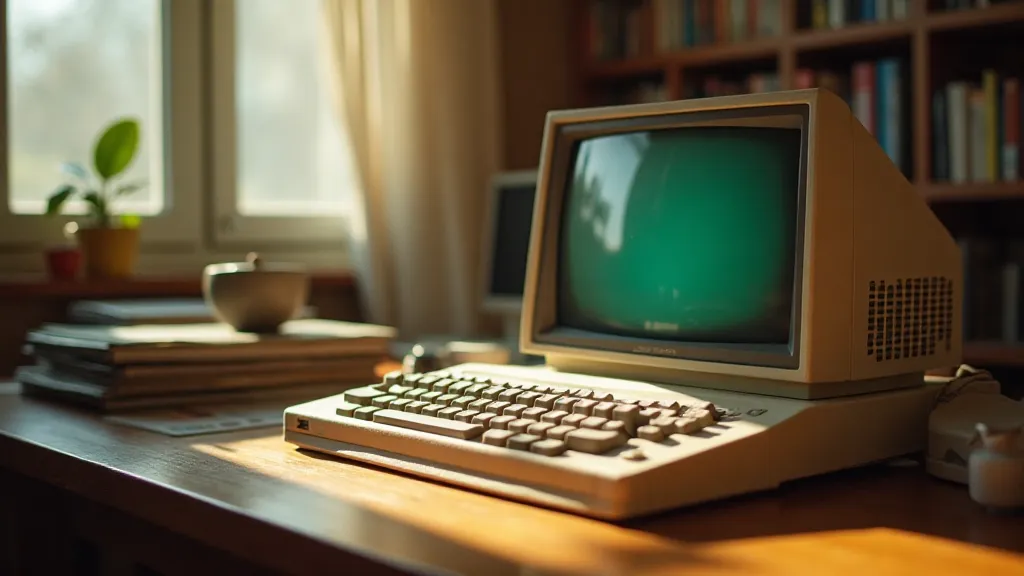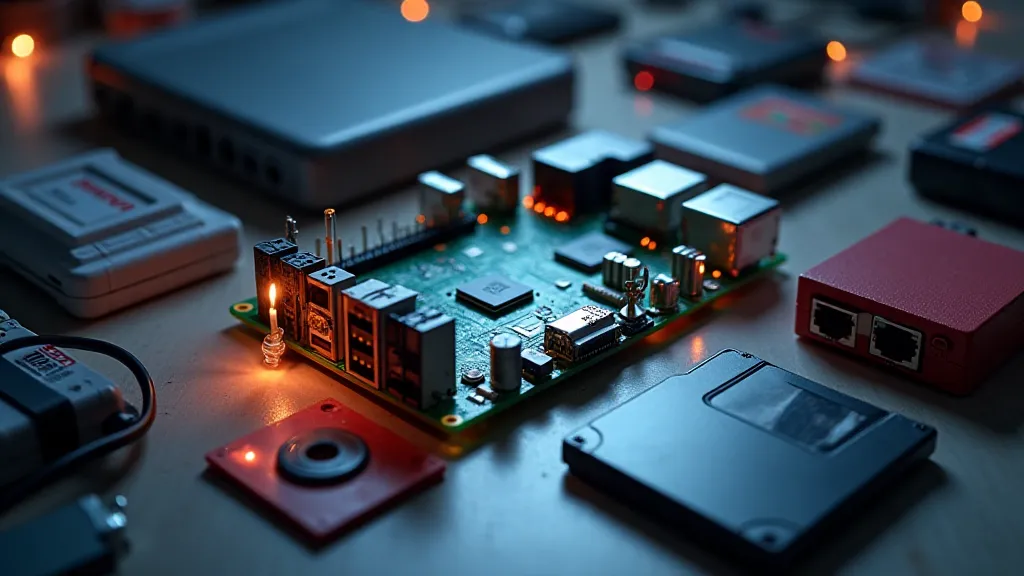Echoes in the Code: Preserving Legacy Hardware with Raspberry Pi Emulation
There's a particular scent that clings to old machines: a blend of dust, warm metal, and the ghost of countless hours spent in focused creation. I remember it vividly from my grandfather’s workshop, a room overflowing with the instruments of his trade – a master accordion craftsman. He's gone now, but the memory of that room, the rhythmic bellows, the precise hammering, remains sharp. His accordions weren't just instruments; they were works of art, each key and reed meticulously placed, a testament to decades of dedication. Just as those accordions carry the echoes of music past, older computers and game consoles hold within them a wealth of digital history, facing the silent threat of obsolescence. Fortunately, there's a growing movement to preserve this history, and the humble Raspberry Pi has become an unlikely champion.
It’s a sobering thought – that the digital landscapes we explore today could one day become inaccessible, lost to failing hardware and unavailable software. Think of those childhood games, the early computer programs that sparked a passion for technology. Without intervention, they risk disappearing, becoming nothing more than nostalgic memories. This isn't just about entertainment; it's about safeguarding our cultural heritage. The software running on these machines often represents the creative expression of generations – artists, programmers, and designers who shaped our digital world. The challenge, however, isn’t simply about replicating the original hardware; it’s about understanding the underlying principles and creative problem-solving that fueled those early innovations, much like understanding how to coax resonant tones from a complex mechanical system. The very essence of that understanding highlights the pursuit of leveraging subtle environmental cues to power technological advancements - a concept further explored in "Resonance and Ruin: Harvesting Energy from Ambient Vibrations".

The Rise of Emulation and the Raspberry Pi's Role
The solution? Emulation. In essence, emulation allows a modern computer to mimic the behavior of an older one. It's like having a virtual version of a vintage machine running within a modern system. The Raspberry Pi, with its affordability and impressive processing power, has emerged as a perfect platform for this. Its small size makes it easy to integrate into various projects, and its open-source nature encourages experimentation and customization. Understanding the interplay of electronics and artistry, similar to the skill required to create resonant tones from an accordion, is essential in appreciating both the original hardware and the emulation process. The complexities involved in translating emotion into electronic response – a challenge inherent in both crafting musical instruments and mimicking digital systems – finds a parallel discussion in "Circuitry as Poetry: Translating Emotion into Electronic Response".
Early emulators were often complex and demanding, requiring significant processing power. But as technology advanced, so did emulation techniques. Modern emulators, particularly those designed for the Raspberry Pi, are incredibly efficient. They leverage the Pi’s hardware acceleration capabilities to provide remarkably accurate and playable experiences, often exceeding the performance of the original hardware. The intricacies of mimicking these systems, and tailoring hardware responses, can be akin to the meticulous construction of custom PCBs, a process explored further in "The Alchemist's Toolkit: Custom PCBs & the Art of Circuit Fabrication".
Beyond Simple Software: Compatibility Challenges and Custom Drivers
However, the journey isn’s always smooth. Simply running a ROM (Read-Only Memory) image isn’t enough. Compatibility issues are common. The original hardware often relied on custom chips and interfaces that aren’t directly replicable in a modern system. This is where the real artistry and ingenuity of the emulation community shines through.
Creating custom drivers – software components that allow the emulator to communicate with virtual hardware – is often a necessity. These drivers are frequently written in low-level languages like C and Assembly, requiring a deep understanding of both the original hardware and the Raspberry Pi’s architecture. It's a meticulous process, often involving countless hours of debugging and refinement. It’s not dissimilar to my grandfather meticulously adjusting each reed in his accordions, ensuring perfect tone and responsiveness. The delicate balance required to coax functionality from constrained hardware echoes the challenges faced when exploring "Circuitry as Poetry: Translating Emotion into Electronic Response" – translating abstract goals into tangible hardware reactions.
The challenges are further compounded when dealing with less-documented or obscure systems. The lack of technical specifications often forces emulator developers to reverse-engineer the hardware, a painstaking process that demands patience and dedication. Understanding how subtle changes in circuit design can drastically alter performance and behavior requires a level of intuition that's almost poetic. The intricacies extend far beyond mere software emulation, encompassing a deeper understanding of how wireless networks operate and how their signals can be harnessed – an area often associated with innovation and exploration on the digital frontier.
Preserving Digital History: More Than Just Games
While emulating classic game consoles like the NES, SNES, and Sega Genesis is a popular application of Raspberry Pi emulation, the scope extends far beyond entertainment. Vintage computers – machines like the Commodore 64, the Apple II, and the IBM PC – were pivotal in the development of software, art, and music. Many essential early programs and creative works were developed exclusively for these machines.

Emulation allows us to access and interact with these digital artifacts, providing invaluable insights into the history of computing. Imagine being able to run the first versions of word processors, spreadsheets, and graphic design software – tools that fundamentally changed the way we work and create. This isn's merely recreation; it’s a form of digital archaeology, unearthing lost treasures from the past. The implications for understanding how these systems interact with the environment, and potentially deriving power from unexpected sources, resonates with explorations of "Resonance and Ruin: Harvesting Energy from Ambient Vibrations" - using subtle environmental cues to power technological advancements.
The Community Effort: A Digital Preservation Movement
The preservation of digital history is rarely a solitary endeavor. It’s a collaborative effort, fueled by the passion and dedication of a global community. Open-source emulation projects thrive on contributions from developers, testers, and enthusiasts. This collaborative spirit mirrors the interconnected nature of my grandfather’s craft; he often collaborated with other artisans, sharing knowledge and expertise to elevate the entire accordion-making community. The distributed nature of these efforts and their reliance on adaptable technologies share similarities with the expanding potential of low-power wireless networks.
Forums, online repositories, and dedicated websites serve as vital hubs for sharing knowledge, troubleshooting issues, and disseminating new developments. The open-source nature of the Raspberry Pi ecosystem fosters innovation and encourages experimentation. It creates a space where anyone, regardless of their technical background, can contribute to the preservation of digital history. The distributed nature of this effort, and the ability to leverage various environmental factors, mirrors the expanding potential of low-power wireless networks, a topic explored in more detail in "/shadows-digital-frontier-wireless-networks."
The Future of Digital Preservation: A Continuing Legacy
As technology continues to evolve at an ever-accelerating pace, the challenges of digital preservation will only intensify. New hardware and software emerge constantly, and the risk of obsolescence looms large. However, the combination of open-source emulation, affordable hardware like the Raspberry Pi, and a dedicated community offers a beacon of hope. The complex interplay of software, hardware, and the human element necessitates a holistic understanding, mirroring the challenges of translating emotion into electronic response.

Just as my grandfather's accordions resonate with the music of the past, Raspberry Pi emulation allows us to preserve the echoes of digital history. It’s a testament to the power of human ingenuity, a commitment to safeguarding our cultural heritage, and a hopeful sign for the future of digital preservation. The journey requires patience, persistence, and a deep appreciation for the past, but the rewards – the ability to experience and learn from the digital artifacts of previous generations – are immeasurable. The legacy continues, one line of code at a time. The ongoing pursuit of understanding these systems, and optimizing their performance, speaks to a wider drive to push the boundaries of what's technologically possible, ensuring that the echoes of the digital past continue to inspire future innovations.
Furthermore, the implications of these technological advancements extend beyond mere preservation, potentially unlocking unforeseen possibilities for innovation and creativity. Just as understanding the intricacies of accordion construction led to new musical forms and techniques, the study of legacy systems through emulation could spark a renaissance in digital art, software development, and even hardware design. The quest to extract energy from ambient vibrations, combined with the ability to reconstruct and interact with historical digital landscapes, promises a future where the past informs and enriches the present in profound and unexpected ways.





